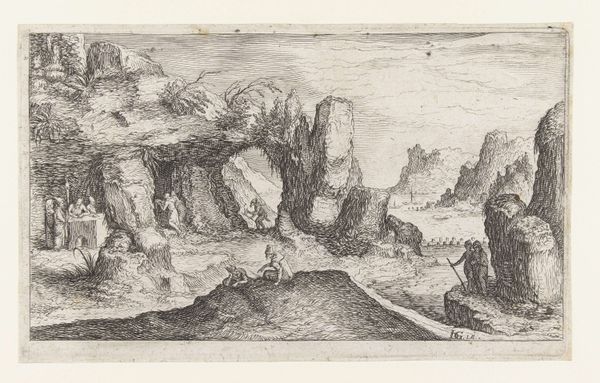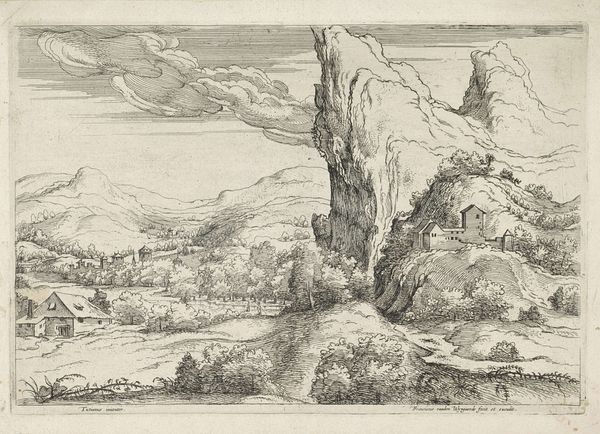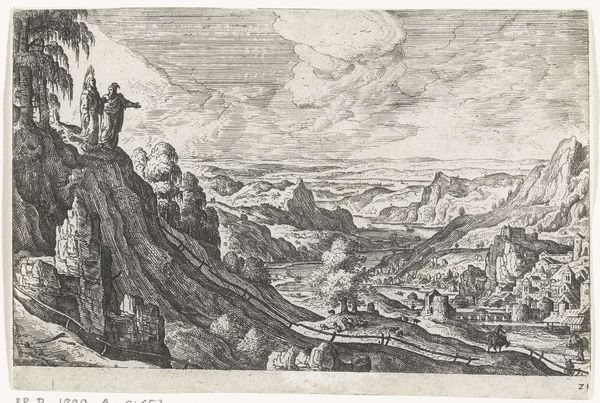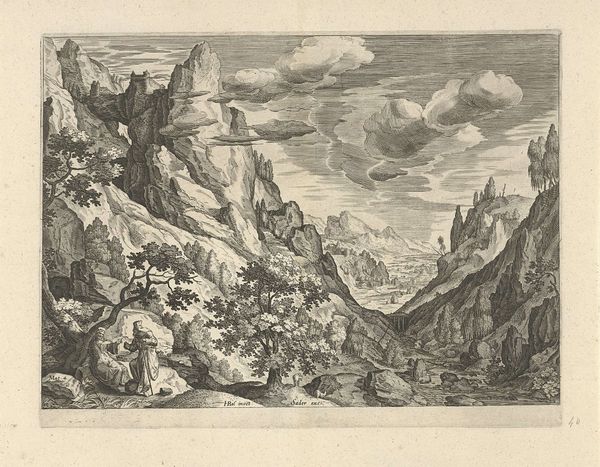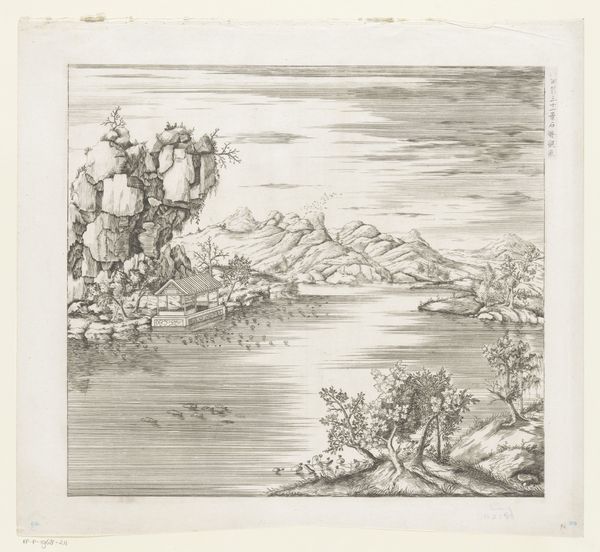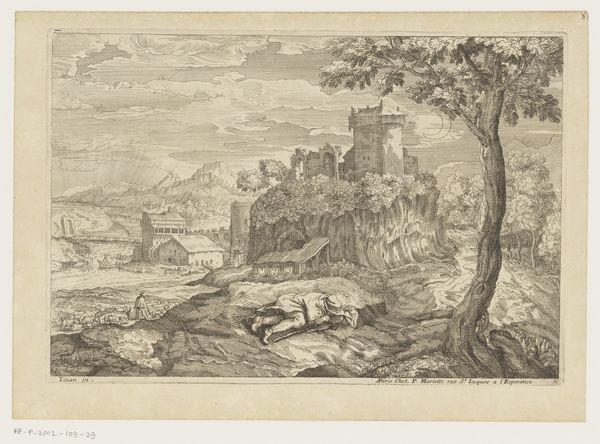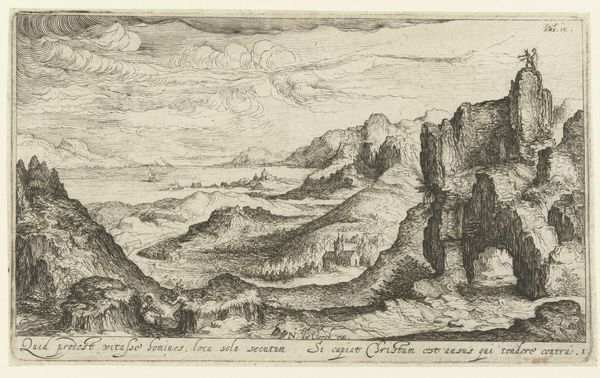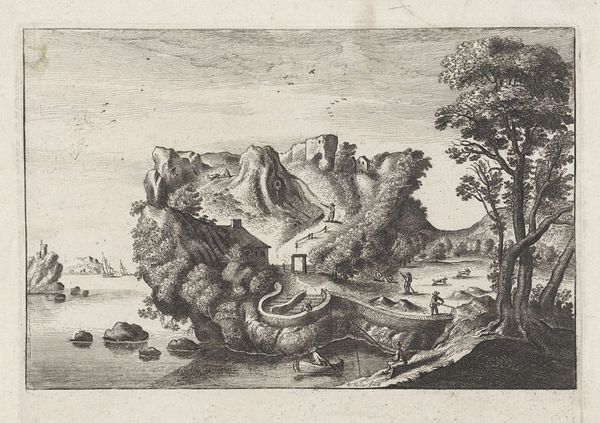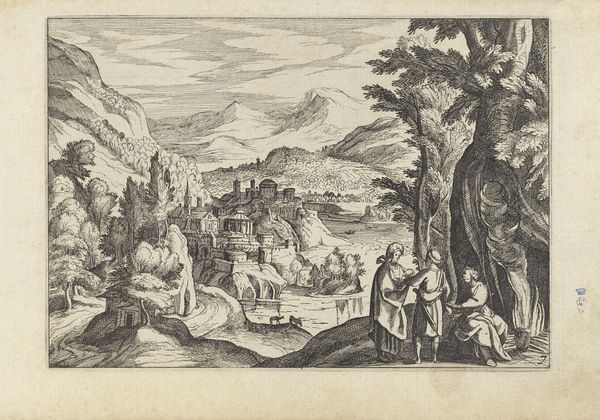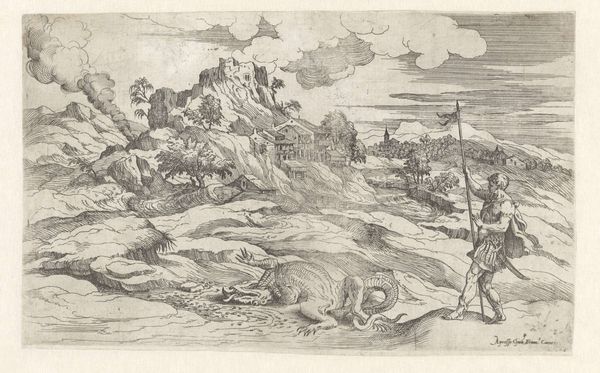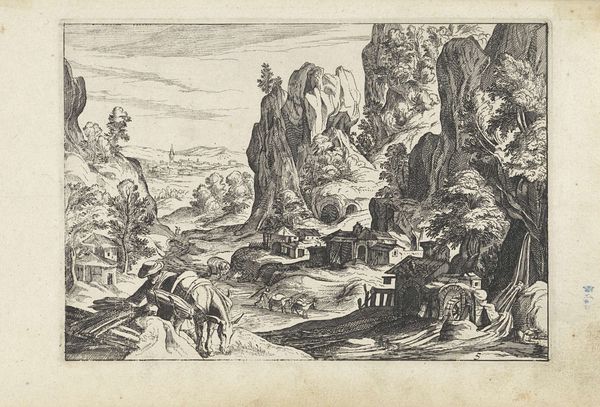
print, engraving
#
ink drawing
#
baroque
# print
#
landscape
#
figuration
#
form
#
line
#
history-painting
#
engraving
Dimensions: height 125 mm, width 190 mm
Copyright: Rijks Museum: Open Domain
Curator: The first impression is one of…dread? Something about the barren landscape and tiny figures makes me uneasy. Editor: That feeling of unease is heightened when you learn that this engraving, likely created sometime between 1550 and 1650, is titled "Jupiter Abducting Ganymede." The print, part of the collection at the Rijksmuseum, portrays a scene lifted from mythology. Curator: So the dread comes from witnessing something violent and unjust? Ganymede's helplessness is baked into the scene's composition and imagery. That eagle form, instantly recognizable as a symbol of Jupiter, dominating both the boy and the sky itself, really amplifies the idea of inescapable divine power. The way Ganymede curls his body also suggest fear. Editor: The story itself, of course, speaks to the relationship between power and vulnerability. The making of prints also speaks to the dissemination of these themes. Prints like these were often created in workshops, using repeatable processes of acid etching, for example, that democratized images. Curator: This is interesting, though. Even with printmaking, we're still wrestling with complex hierarchies. Here you have a supposedly divine figure exercising authority, the original artist wrestling with pictorial conventions of the time, and printmakers who in turn interpret artistic styles of the time with varying levels of material success in their craft. So many levels of skill at play influencing the perceived power dynamic. Editor: Yes, that makes me question what visual materials like engravings really accomplished within period culture. Was this Jupiter to be admired or feared? To what extent was that message embedded in the material labor and techniques that allowed for it to be distributed far and wide? Curator: It’s all incredibly complicated. What’s powerful is the engraving’s ability to hold all of those competing interpretations together in one space and across centuries. Editor: I agree. The interplay between materiality and symbolism is really at its strongest here.
Comments
No comments
Be the first to comment and join the conversation on the ultimate creative platform.

